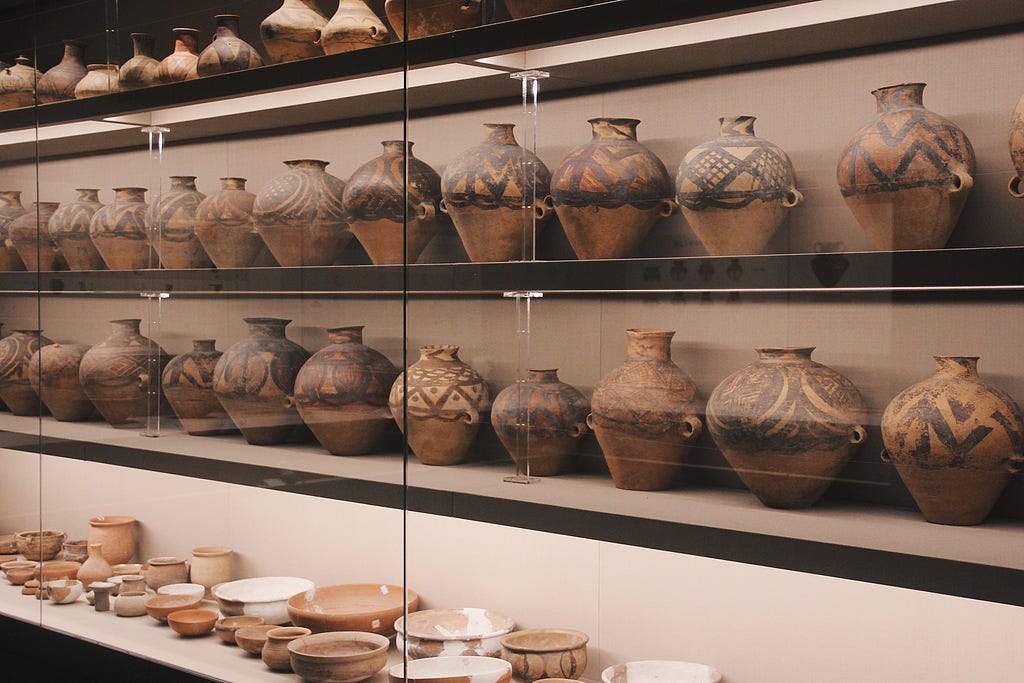What are the historical ties between China's Han and Tibetan peoples?
Empirical refutation of the "Southern Origin" hypothesis of Tibetans
Zhang Yun

The discovery of the Karub archaeological site, the common origin of the Chinese and Tibetan languages, and genetic analysis show that there are close historical connections between the Tibetan and Han peoples.
The "Southern Origin" hypothesis, maintained by some in the international academic community, suggests that ancient Tibetan rulers may be descended from Indian nobility or come from India. This view appears in Tibetan religious texts after the 11th century. However, the absence of such references in ancient Tibetan literature from the 8th to the 10th centuries suggests that the association of the ancient Tibetan royal lineage with the royalty of ancient India may be a later forgery.
It is also important to note that the origins of a royal lineage and an ethnic group are completely different concepts. The stories found in Tibetan religious texts seek to explain the origin of the royal lineage, rather than the origin of the Tibetan people themselves.
The "Southern Origin" hypothesis also seems to lack scientific basis from the perspectives of anthropology and linguistics. Archaeological research into Tibetan ethnicity reveals that their forebears were of the Mongolian, rather than the Indo-Aryan race. From a linguistic standpoint, Tibetan belongs to the Tibeto-Burman branch of the Sino-Tibetan language family, in contrast to Hindi, which belongs to the Indo-European language family. Therefore, all indicators and research indicate that the "Southern Origin" hypothesis concerning the Tibetan people has little validity. In contrast, there are close historical connections between the Tibetan and Han peoples.
Long history of Han-Tibetan interaction
The excavations at the Karub archeological site in Karub village, Qamdo, Xizang Autonomous Region, in 1977, substantially advanced research into the early history of the Qinghai-Xizang Plateau, revealing the historic close interactions between the plateau and the inland areas.
The semi-subterranean dwellings at the Karub site are closely related to the Yangshao Culture of the Central Plains, indicating a westward and southward spread of this cultural influence. The stone tools, decorative patterns, and particularly the painted pottery excavated from Karub show a clear connection to the Majiayao phase of the Yangshao Culture. Additionally, an ancient plant—millet—was discovered at the Karub site, which is unique to the Central Plains, especially the Yellow River basin. The practice of raising pigs and other domestic animals is further evidence of the westward and southward spread of the Yangshao Culture into the Qinghai-Xizang Plateau. Furthermore, the discovery of shell-like artifacts has prompted scholars to hypothesize that these may have functioned as currency in that period.
The Karub Culture in the Neolithic Age is currently dated by the academic community to approximately 4,000 to 5,000 years ago. Through systematic analysis, a clear historical trajectory emerges: the Yangshao Culture, present in the Yellow River basin 8,000 years ago, progressively moved westward, leaving behind cultural relics from 7,000, 6,000, and 5,000 years ago, each marking a distinct era. This progression is very clear. As the Central Plains civilization expanded westward, a route diverged southward in what is now Gansu and Qinghai provinces, along the upper reaches of the Yellow River, following the ethnic corridor of the Hengduan Mountains, leading to present-day Qamdo in Xizang. The discovery of the Karub archaeological site confirms its role as a significant node in the westward dissemination of the Central Plains civilization. Consequently, the academic community has deduced that the ancient Karub people migrated from the Yellow River region.
In addition to the archaeological discoveries of the Karub site, other significant archaeological findings in the Xizang Plateau region, such as the Qugong site in Lhasa, the Changguo Valley site in Shannan, the Xiao-Enda site in Qamdo, and the microlithic nomadic culture sites on the northern Tibetan Plateau, all reflect, to varying degrees, the early historical characteristics of the Qinghai-Xizang Plateau and its connections with the Central Plains region.
Historical evidence for the common origin of the Chinese and Tibetan languages
Linguistically, Chinese and Tibetan both belong to the Sino-Tibetan language family. There is a certain consensus among both domestic and international academics on this matter, along with numerous corresponding research findings.
In Proto-Chinese and Sino-Tibetan: Data Towards Establishing the Nature of the Relationship, American scholar N. Bodman details 485 interconnected Sino-Tibetan words and highlights the cognates that date back to the Zhou dynasty (1046–256 BC), indicating a shared linguistic heritage.
Chinese scholar Yu Min has created a "Sino-Tibetan List of Cognates," with approximately 600 cognates. He has discovered that Tibetan (Tubo) is very similar to the language of the Qi people spoken (descendants of Shennong with the surname of Jiang) during the Spring and Autumn Period (770–476 BC) and Warring States Period (475–221 BC). Moreover, this similarity is not limited to vocabulary alone. As early as the beginning of the 1980s, Yu published an article titled Exploring the Common Origin of the Sino-Tibetan Peoples and Their Languages, and subsequent academic research has further explored this topic.
The linguistic similarities suggest that the Han and Tibetan peoples share a close relationship with the ancient Qiang people. The ancestors of the Huaxia people, who are the ancestors of Han, actually have a lineage connection to the ancient Qiang. According to Sima Qian in the Records of the Grand Historian, Da Yu, founder of the Xia dynasty (c. 2070–1600 BC), emerged from the Western Qiang. Similarly, the founders of the Zhou dynasty also had close ties to the ancient Qiang people. Scholars believe that the prominent surname "Jiang" is synonymous with "Qiang," indicating that they may have originated from the same ancient ethnic group or share a common ancestral origin.
There are different accounts in historical texts regarding the origins of the Tibetan ancestors, the Tubo people. However, it has been asserted that "Tubo is originally part of the Western Qiang," meaning that the Tubo people are descendants of the Western Qiang. This is further supported by the Han dynasty (206 BC–AD 220) scholar Xu Shen in his classic work Analytical Dictionary of Characters (Shuo Wen Jie Zi), where he claims that "Qiang refers to the shepherds of the Western Rong." The "Western Rong" refers to a group of nomadic tribes that historically inhabited the western part of ancient China. Known for their pastoral lifestyle, they were culturally distinct from the agricultural societies in central China.
Therefore, it can be said that the ancient Qiang people should not be identified as today's Qiang ethnic group; rather, it is a designation shared by many ancient peoples. They engaged in pastoral production and exhibited numerous common characteristics. Later, they integrated with multiple ethnic groups, becoming one of the ancestral sources of these groups, which includes today's Han and Tibetan peoples in China.
Genetic evidence of kinship between Han and Tibetan peoples
A team of scientists from China and abroad conducted an analysis of ancient human lineages, using DNA to determine the genetic connections between various ancient races and ethnicities. These findings elucidate our understanding of the origins of the Tibetan people, the relationship between the Han and Tibetan peoples, and the connections between the Han, Tibetans, and other ethnic groups.
Genetic analysis has revealed a close relationship between the Han and Tibetan peoples in terms of the genetic markers M122 and M134, indicating that the two ethnic groups diverged at a relatively late stage in history. Some scholars suggest that this divergence occurred around 5,000 years ago, while others propose a timeframe of 4,000 years. Regardless of the specific estimate, a common viewpoint is that the genetic lineage shows a very close blood relationship between the Han and Tibetan peoples.
Some scholars have analyzed the early differentiation routes of the ancient Chinese people, noting that one group migrated northward along the western side of the Yunnan-Guizhou Plateau, ultimately reaching the Hetao region (located within Inner Mongolia and Ningxia Hui Autonomous Region, along the alluvial plains of the Yellow River) and the middle and upper reaches of the Yellow River basin about 10,000 years ago. Referred to by later generations as the "Ancient Qiang," they are considered the common ancestors of both the Han and Tibetan peoples.
With the emergence of the cultivation of millet, Neolithic culture began to flourish in this region, and the subsequent population increase demanded the establishment of new dwelling places. As a result, the two language groups of the Sino-Tibetan language family began to diverge. A sub-group, which had the M134 genetic marker, underwent a further mutation of M117. They carried this mutation eastward and settled in the Weihe River basin (present-day eastern Gansu and central Shaanxi), embracing agriculture. This group is known as the later Huaxia people, who continued to evolve into the Han people.
The other subgroup is known as the Tibeto-Burmans. They left the Yellow River basin and migrated westward and southward, eventually settling in the regions north and south of the Himalayas. During the migration process, this group underwent continuous splits, much like cellular division, leading to the emergence of distinct ethnic groups including the Tibetans, Qiang, Yi, Jingpo, and Tujia.
Although this connection is merely one aspect of the evidence provided by the scientific field, it aligns with archaeological data, historical records, myths and legends, and interrelated facts in linguistics, showing a degree of correspondence or complementarity. This also provides clues for a deeper understanding of the historical origins between the Han and Tibetan peoples.
The views don't necessarily reflect those of DeepChina.
The author is Zhang Yun, Director and Researcher at the Institute of History, China Tibetology Research Center.
Editor/ Liu Xian
Translator/ Zhang Rong
Related articles
Chief Editor/ Yang Xinhua
Coordination Editor/ Liu Xian
Reviewer/ Liu Li
Copyeditor/ Zhang Weiwei
Image Editor/ Tan Yujie
About DeepChina
DeepChina is an elite academic initiative that offers objective and rational analyses on a broad spectrum of topics related to China, encompassing politics, economics, culture, human rights, diplomacy, and geopolitics.





